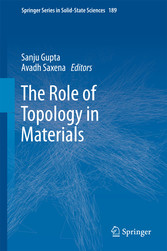Suche
Lesesoftware
Specials
Info / Kontakt
The Role of Topology in Materials
von: Sanju Gupta, Avadh Saxena
Springer-Verlag, 2018
ISBN: 9783319765969 , 307 Seiten
Format: PDF, Online Lesen
Kopierschutz: Wasserzeichen




Preis: 106,99 EUR
eBook anfordern 







